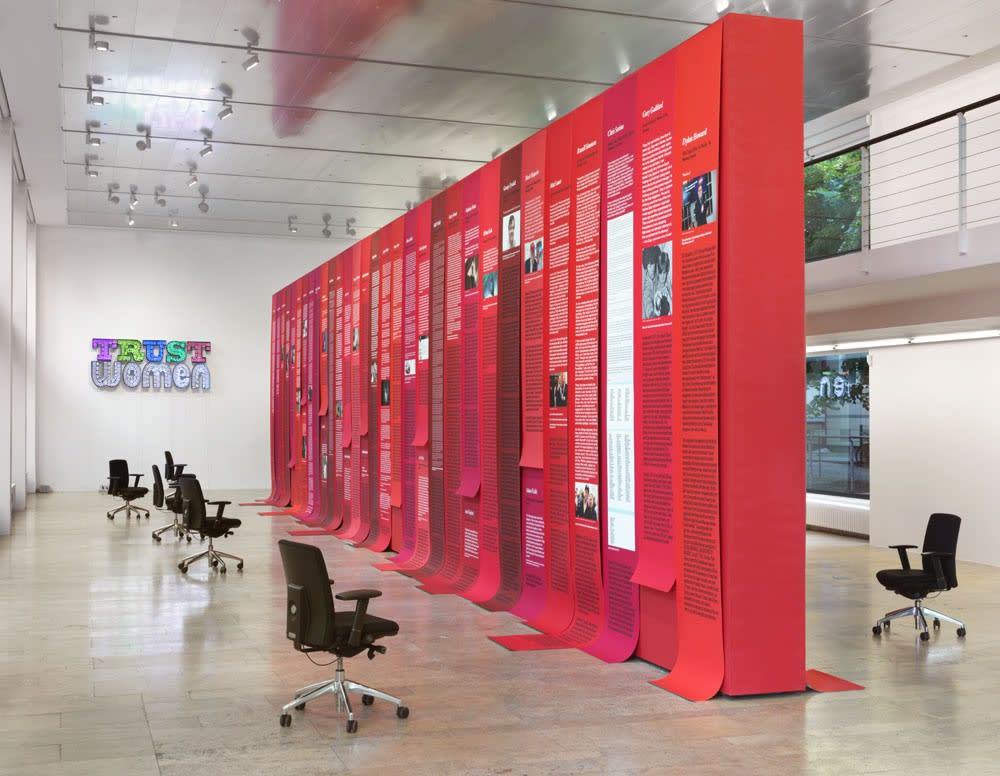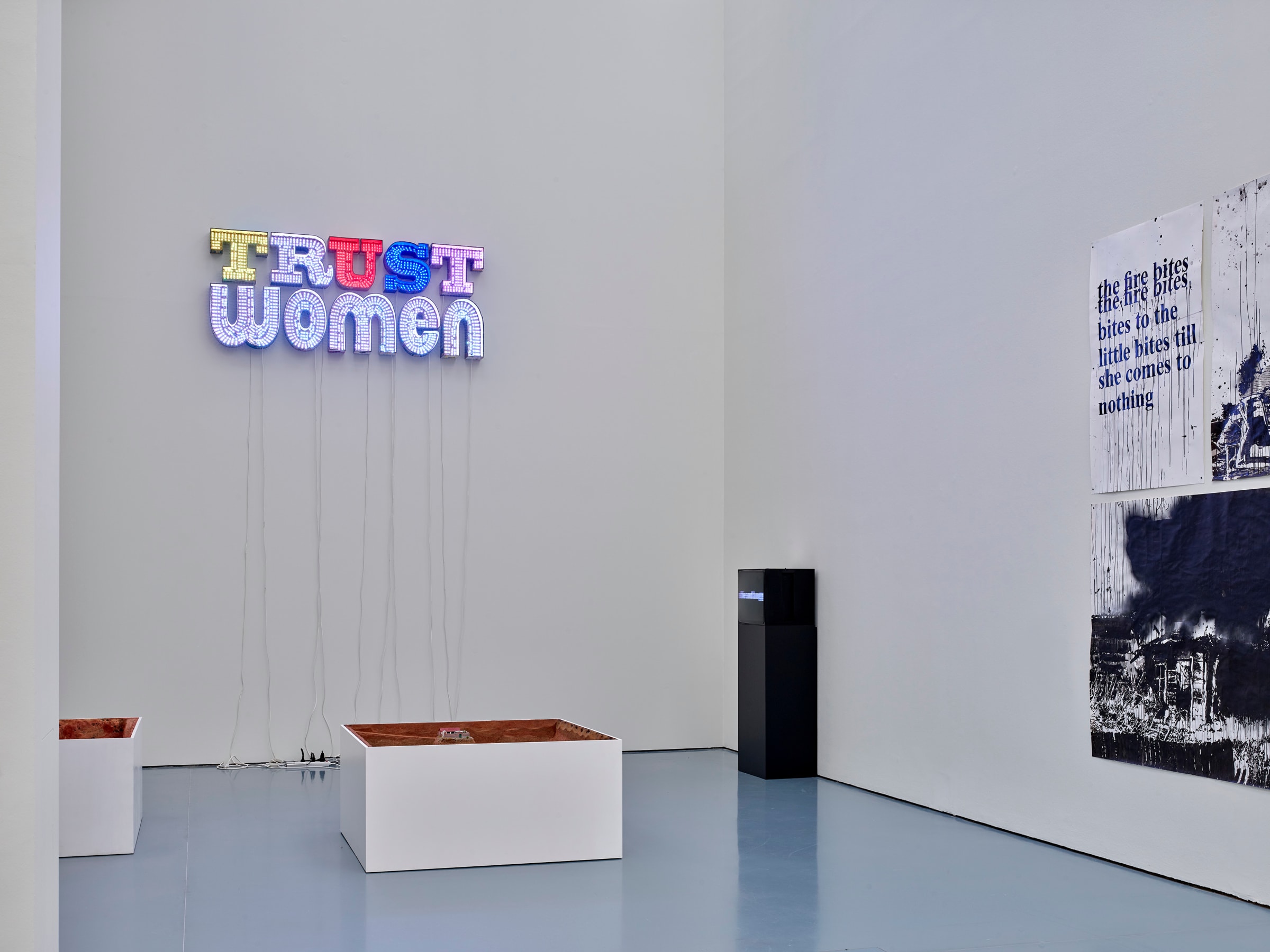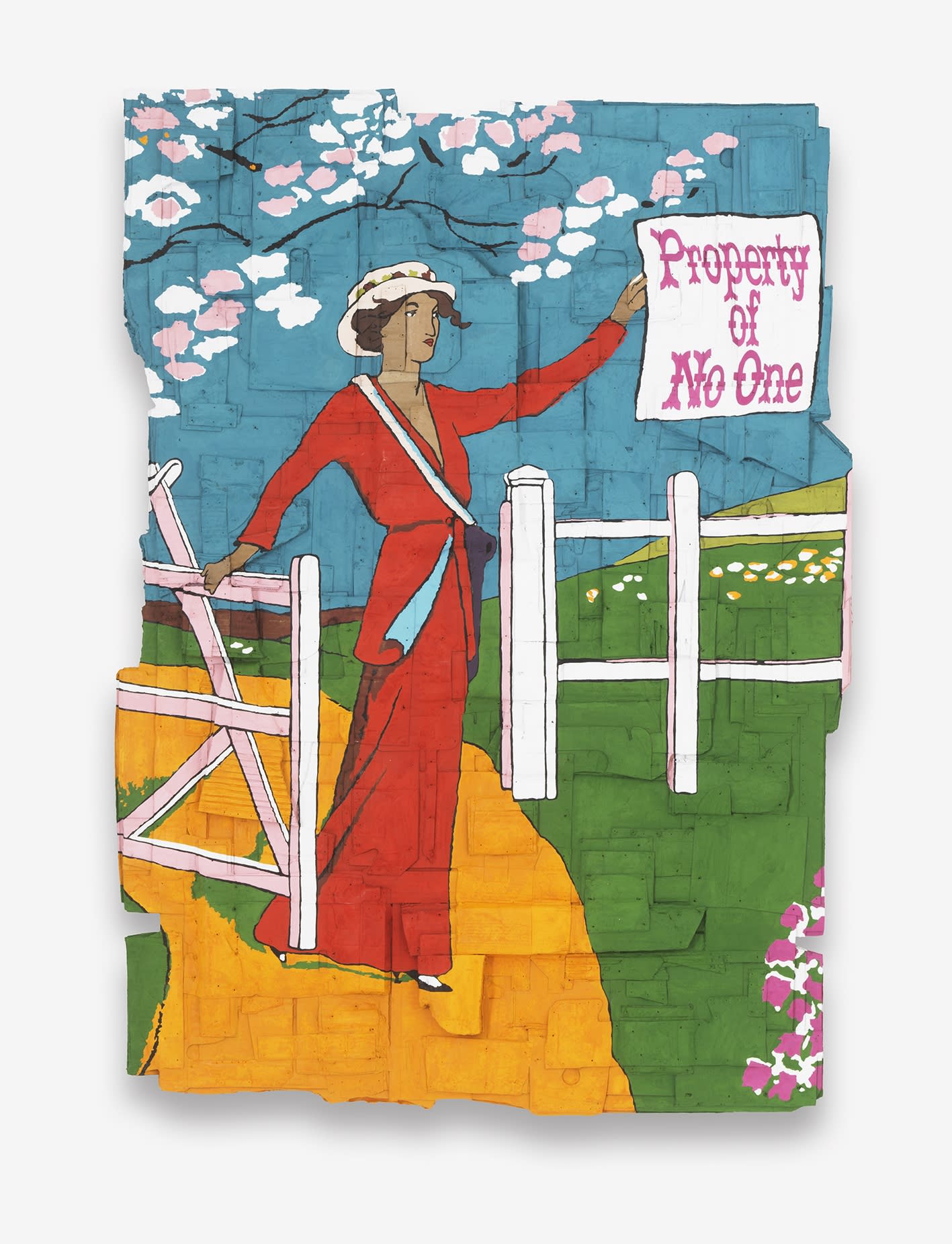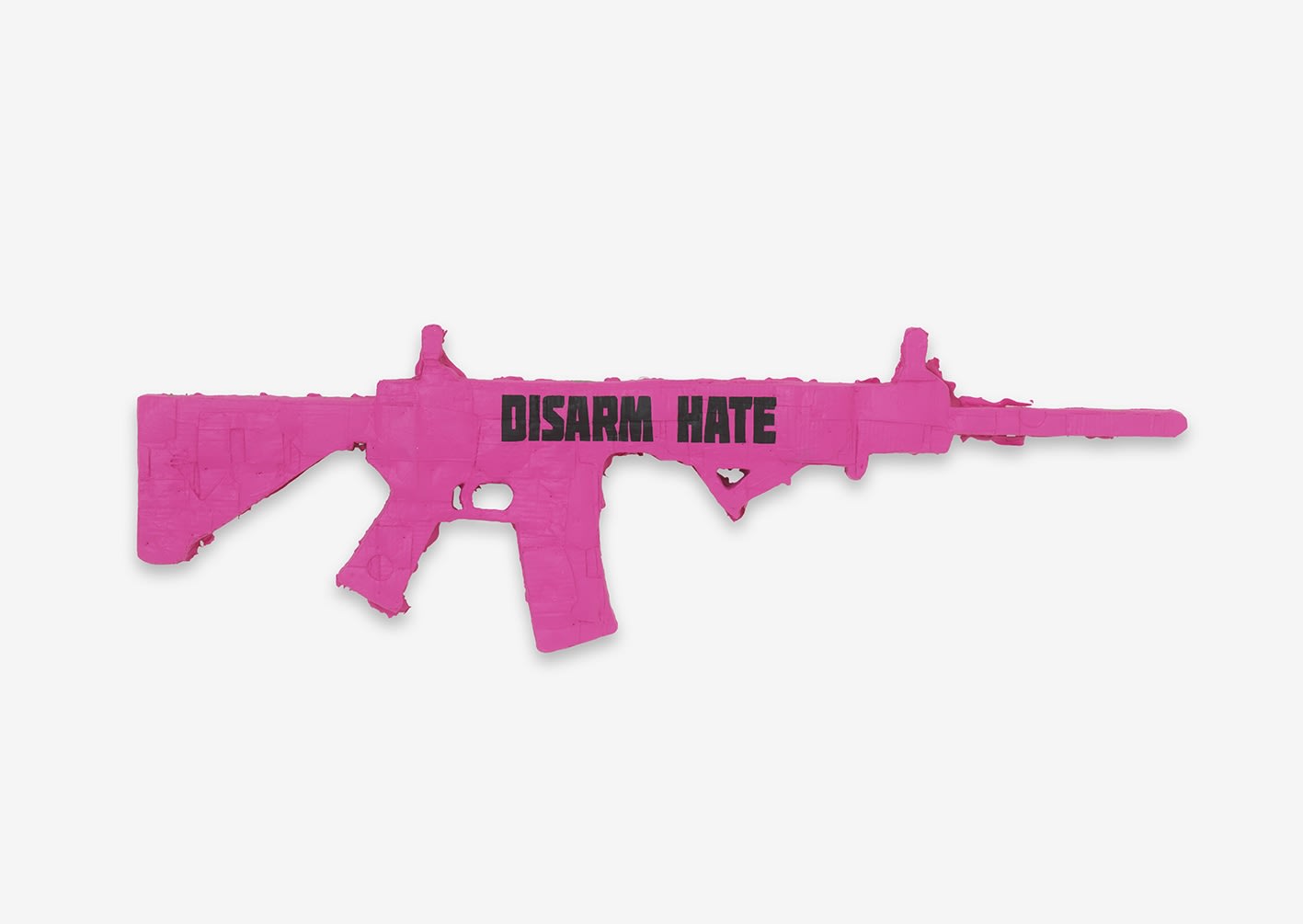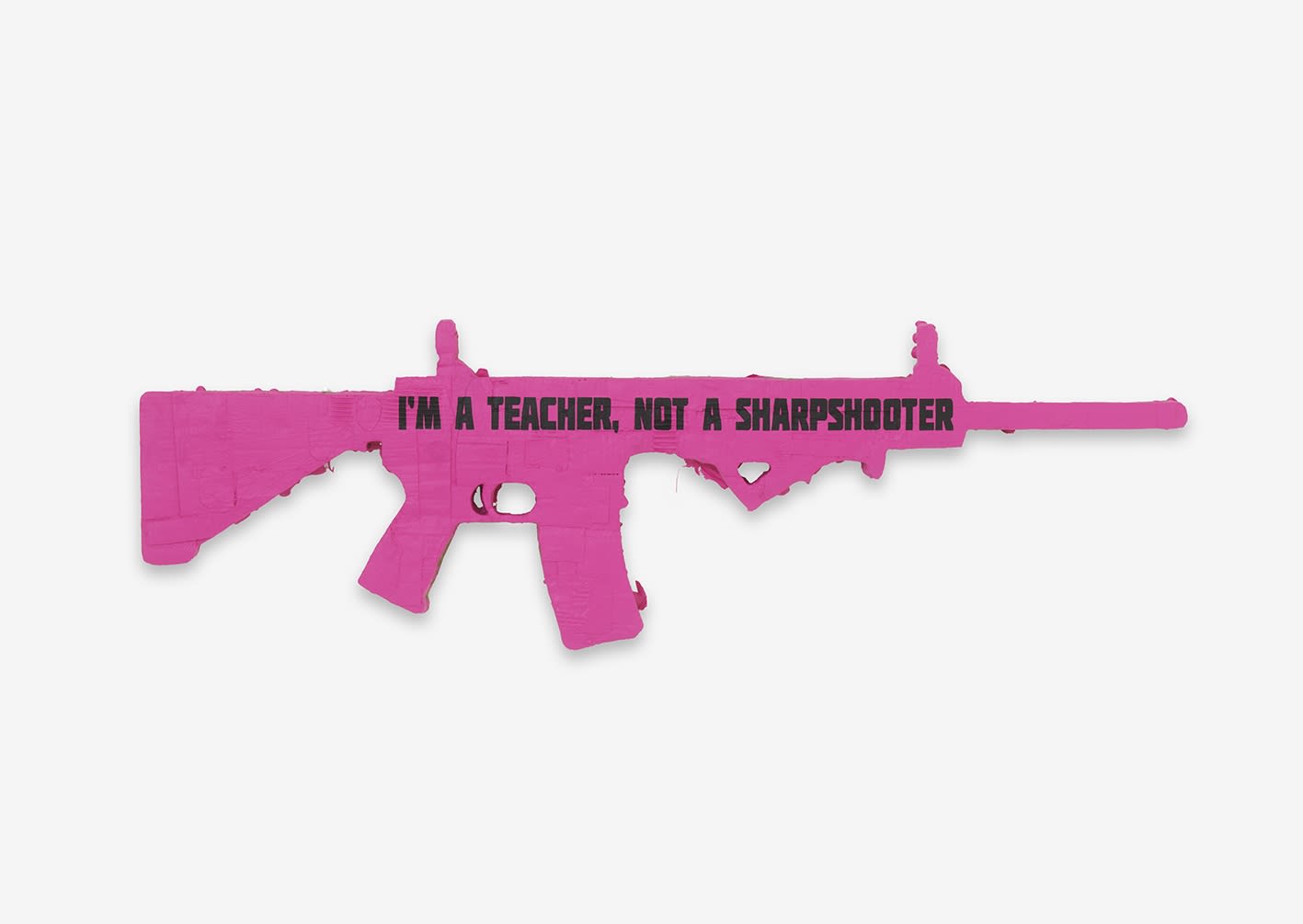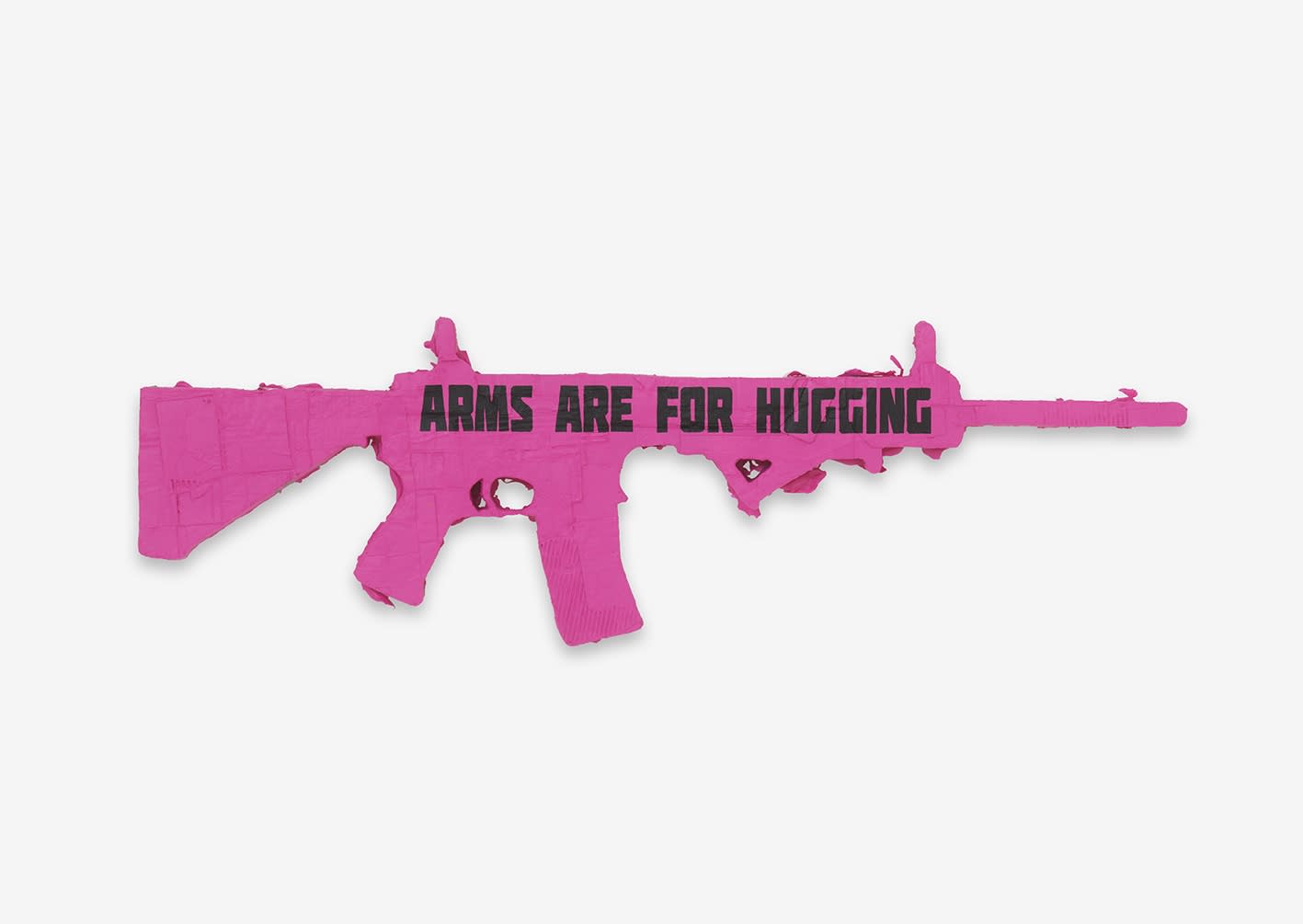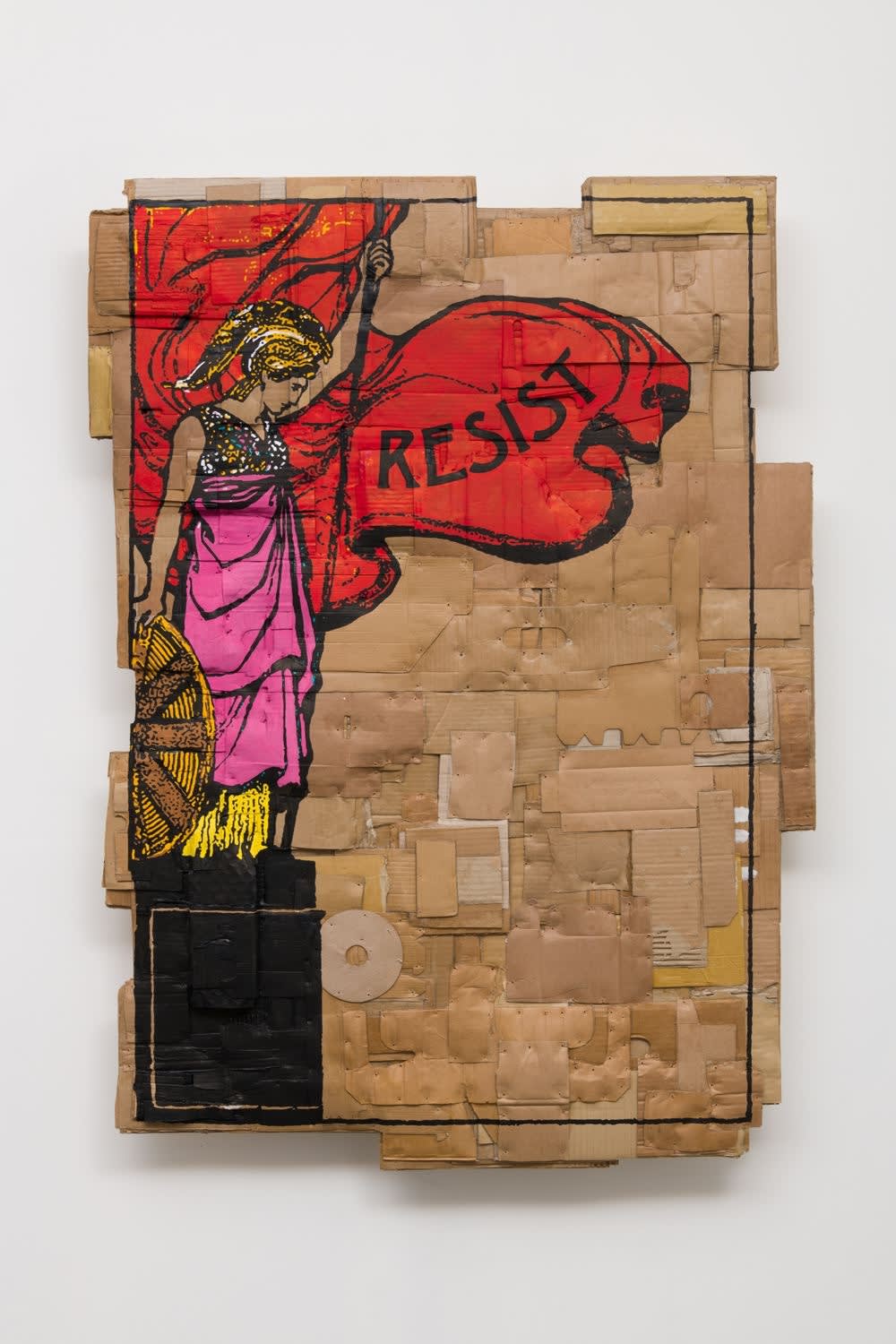Andrea Bowers: Open Secret
When comedian/actor Aziz Ansari was accused of sexual harassment on January 14, 2018 by an anonymous 23-year-old woman, the story was met with a mixed response from the media and public, some of whom believed the details of the account to be too consensual to be considered misconduct. Feminist writer Jessica Valenti tweeted, „A lot of men will read that post about Aziz Ansari and see an everyday, reasonable sexual interaction. But part of what women are saying right now is that what the culture considers ‘normal’ sexual encounters are not working for us, and oftentimes harmful.“ In her second solo show at Capitain Petzel titled Open Secret, Andrea Bowers focuses on aspects of the women’s movement over the past year. Bowers participated in the #DisruptJ20 protests and the Women’s March during the presidential inauguration on January 20 and 21, 2017 in Washington D.C. The influence and energy of the Women’s March continues to manifest in many ways, but for this exhibition Bowers focuses on the #MeToo and Times’s Up movements. #MeToo, an international movement against sexual harassment and assault, spread virally in October 2017 following the public revelations of sexual misconduct allegations against Harvey Weinstein.
The main work in the show, Open Secrets (Part One), 2018, consists of 100 photographic prints covering both sides of a 19 by 4-meter wall. Each print lists the name and occupation of an accused person in the #MeToo movement, followed by their „apology“ and an up-to-date summary including details of the accusations, job status of the accused, legal actions, and other pertinent details. Some of the prints contain related photos. Bowers started a database of #MeToo names, articles and apologies over 5 months ago that has grown to include 355 names at present. This exhibition is the first of an ongoing project reflecting on 100 „apologies/nonapologies“ and narratives printed in 9 different red backgrounds. The fonts of the apologies are the same used by the original publishing platform, e.g. Twitter, Facebook, journals, magazines and newspapers. Several office chairs are provided for use while attendees read the texts, not only for practicality, but also to reference the nature of sexual harassment as workplace violation.
This project serves as both a physical manifestation of patriarchy and a monument to the courage of victims who are speaking out against sexual harassment for the first time in our history, thereby making public what many repeatedly said were „open secrets“ Activist Tarana Burke first used the phrase „Me Too“ in 2006. It became viral when Alyssa Milano encouraged women in 2017 to post the hashtag along with their personal experiences of sexual harassment as a way to „give people a sense of the magnitude of the problem.“ Many of the stories of sexual harassment span decades because women feared that they would be retaliated against or met with disbelief if they came forward. A large LED sign made of cardboard hangs above the Open Secrets wall and flashes the words, „TRUST WOMEN“ in multiple colored lights.
The first floor includes a grouping of works from Bowers’s series of colorful cardboard collages. Three of the works illustrate powerful women. The images originate from the history of political graphics but have been reworked to represent contemporary feminist issues related to intersectionality and the #MeToo movement. As a nod to the idea of a feminist army, as well as a protest against the U.S. government’s gun policies, Bowers made five large pink cardboard assault rifles painted with slogans from the „March for Our Lives“ protests, originally inspired by a CODEPINK action from several years ago.
Projected on the lower floor of the gallery is Disrupting and Resisting, J20 & J21, an hour and a half documentary video that honors the work of two activist groups whose founding principles are similar. #DisruptJ20 is a collective of activists who came together for a series of mass protests to shut down the presidential inauguration ceremonies on January 20, 2017. #DisruptJ20 coalition included: The Future is Feminist, Movement for Black Lives, Climate Justice, Labor Justice, Queer rights, Racial Justice and Communities Under Attack. The second day of video was shot on January 21, 2017 and records the Women’s March on Washington, the largest single-day protest in U.S. history, which was aimed at Donald Trump and his anti-women or otherwise offensive positions and statements. The women-led movement brought together people of all genders, races, cultures, sexual orientations, political a liations, disabilities and backgrounds to affirm a shared humanity and pronounce a bold message of resistance and self-determination. Bowers purposely unites these two groups and days of action to highlight a strong and diverse alliance fighting against white supremacy, patriarchy and the suppression of freedom.
It is the artist’s goal to memorialize the different activist groups stemming from the protests around the Trump inauguration as important moments of dissent in support of democracy, freedom of speech, social justice and the right of the people to peaceably assemble. As the activist known as Future of Black Lives Matter is recorded proclaiming in the video, Disrupting and Resisting, J20 & J21, „Coalitions aren’t meant to be permanent. Sometimes they are fragile, and they are temporary, but we have got to build them. This, these next four years, we have got to find each other in this movement.“
Andrea Bowers (*1965, Ohio) lives and works in Los Angeles. Her works have been exhibited internationally in solo exhibitions at, among others, The Hammer Museum, Los Angeles (2017); Contemporary Arts Center, Cincinnati (2017); Bronx Museum, New York (2016); Espace Culturel Louis Vuitton, Paris (2014). Among her recent group exhibitions are The High Line, New York (2018); Schirn Kunsthalle Frankfurt (2018); Documenta 14, Kassel (2017) and Triennale di Milano, Milan (2017).
-
 Andrea BowersOpen Secrets (Part I), 2018Archival pigment prints96 prints, dimensions variable
Andrea BowersOpen Secrets (Part I), 2018Archival pigment prints96 prints, dimensions variable
each: width 61 cm / 24 inches, various lenghts
wall installation: 4 x 19 x 0,5 m / 13 x 62 x 1.6 feet
Production, Writing, Editing, Graphic Design, Printing:
Angel Alvarado, Kate Alexandrite, Ian Trout, David Burch, Miriam Katz, Ryan BealEdition 1/2, 1 ap -
 Andrea BowersTrust Women, 2018Cardboard and color changing LED lights, acrylic gel medium102 x 249 x 16 cm
Andrea BowersTrust Women, 2018Cardboard and color changing LED lights, acrylic gel medium102 x 249 x 16 cm
40 x 98 x 6 inches -
 Andrea BowersNo Walls No Glass Ceiling (Originally a Celebratory Poster for the Liberation of France during World War II, illustrated by Philippe Grach, 1944), 2018Acrylic marker on cardboard190.5 x 132 x 13 cm
Andrea BowersNo Walls No Glass Ceiling (Originally a Celebratory Poster for the Liberation of France during World War II, illustrated by Philippe Grach, 1944), 2018Acrylic marker on cardboard190.5 x 132 x 13 cm
75 x 52 x 5 inches -
 Andrea BowersProperty of No One (Originally a Promotional Poster for "The Weekly Suffragette" Newspaper, Illustrated by Mary Bartels, 1912), 2018Acrylic marker on cardboard126 x 92 x 12 cm
Andrea BowersProperty of No One (Originally a Promotional Poster for "The Weekly Suffragette" Newspaper, Illustrated by Mary Bartels, 1912), 2018Acrylic marker on cardboard126 x 92 x 12 cm
49 x 36 x 4.7 inches -
 Andrea BowersOpen Secrets (Part I), 2018Archival pigment printseach: width 61 cm / 24 inches, various lenghts
Andrea BowersOpen Secrets (Part I), 2018Archival pigment printseach: width 61 cm / 24 inches, various lenghts
Production, Writing, Editing, Graphic Design, Printing:
Angel Alvarado, Kate Alexandrite, Ian Trout, David Burch, Miriam Katz, Ryan BealEdition 2/2, 1 ap , (divided up into 20 groups of 5 texts each) -
 Andrea BowersOpen Secrets (Part I), 2018Archival pigment printseach: width 61 cm / 24 inches, various lenghts
Andrea BowersOpen Secrets (Part I), 2018Archival pigment printseach: width 61 cm / 24 inches, various lenghts
Production, Writing, Editing, Graphic Design, Printing:
Angel Alvarado, Kate Alexandrite, Ian Trout, David Burch, Miriam Katz, Ryan BealEdition 2/2, 1 ap , (divided up into 20 groups of 5 texts each) -
 Andrea BowersBooks Not Bullets: Ode to CODEPINK (Santa Barbara), 2018Cardboard, acrylic paint50 x 150 x 5.5 cm / 20 x 59 x 2 inches
Andrea BowersBooks Not Bullets: Ode to CODEPINK (Santa Barbara), 2018Cardboard, acrylic paint50 x 150 x 5.5 cm / 20 x 59 x 2 inches -
 Andrea BowersProtect Kids, Not Guns: Ode to CODEPINK (Newtown), 2018Cardboard, acrylic paint50 x 150 x 5.5 cm / 20 x 59 x 2 inches
Andrea BowersProtect Kids, Not Guns: Ode to CODEPINK (Newtown), 2018Cardboard, acrylic paint50 x 150 x 5.5 cm / 20 x 59 x 2 inches -
 Andrea BowersDisarm Hate: Ode to CODEPINK (Benton), 2018Cardboard, acrylic paint50 x 150 x 5.5 cm
Andrea BowersDisarm Hate: Ode to CODEPINK (Benton), 2018Cardboard, acrylic paint50 x 150 x 5.5 cm
20 x 59 x 2 inches -
 Andrea BowersI'm a Teacher, Not a Sharpshooter: Ode to CODEPINK (Parkland), 2018Cardboard, acrylic paint50 x 150 x 5.5 cm
Andrea BowersI'm a Teacher, Not a Sharpshooter: Ode to CODEPINK (Parkland), 2018Cardboard, acrylic paint50 x 150 x 5.5 cm
20 x 59 x 2 inches -
 Andrea BowersArms are for Hugging: Ode to CODEPINK (Santa Fe), 2018Cardboard, acrylic paint50 x 150 x 5.5 cm
Andrea BowersArms are for Hugging: Ode to CODEPINK (Santa Fe), 2018Cardboard, acrylic paint50 x 150 x 5.5 cm
20 x 59 x 2 inches -
 Andrea BowersResist (Illustration Designed by Suffrage Atelier, London, 1909), 2017Acrylic marker on cardboard137.2 x 101.6 x 14 cm
Andrea BowersResist (Illustration Designed by Suffrage Atelier, London, 1909), 2017Acrylic marker on cardboard137.2 x 101.6 x 14 cm
54 x 40 x 5.5 inches -
 Andrea BowersDisrupting and Resisting, J20 & J21, 2017, 2018Single channel HD video with color and sound89:23 minEdition of 5 + 2 AP
Andrea BowersDisrupting and Resisting, J20 & J21, 2017, 2018Single channel HD video with color and sound89:23 minEdition of 5 + 2 AP
